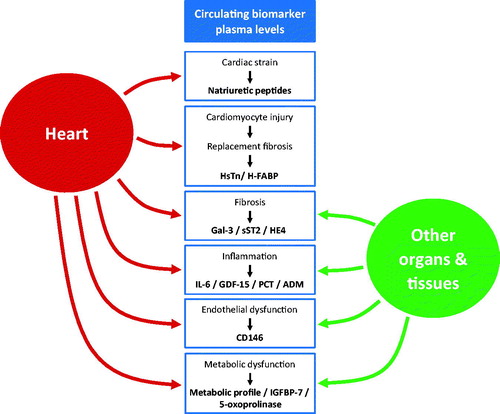Figures & data
Table 1. Overview of selected (novel) heart failure biomarkers and associated conditions besides heart failure.

![Figure 2. Two pillars of HF biomarker research. HF plasma biomarkers are currently predominantly investigated in clinical cohorts. Despite these investigations, progression in the clinical use of HF biomarkers is limited. Systematic improvements in clinical HF biomarker research have therefore been included to generate the required information [Citation186,Citation187]. We now propose an additional pillar of HF biomarker research, namely, the preclinical pillar, to provide additional information from studies in animals that should enhance our understanding, and together should pave the way to finally exploit these novel biomarkers. As in clinical studies, this will require systematic approaches and reports as indicated.](/cms/asset/39a91366-6fdb-4a65-a00b-ea5a39a70d15/ilab_a_1460576_f0002_b.jpg)
